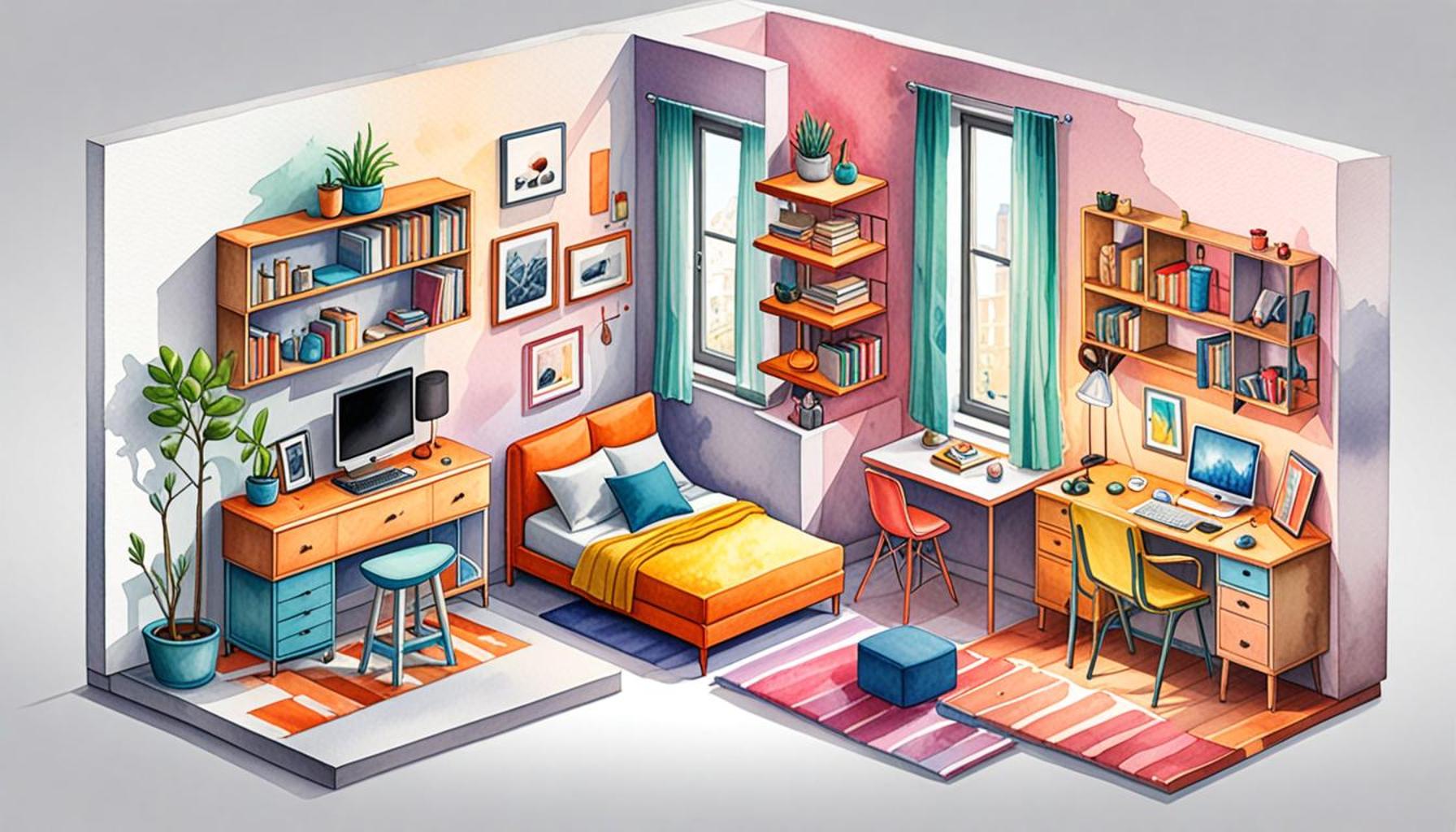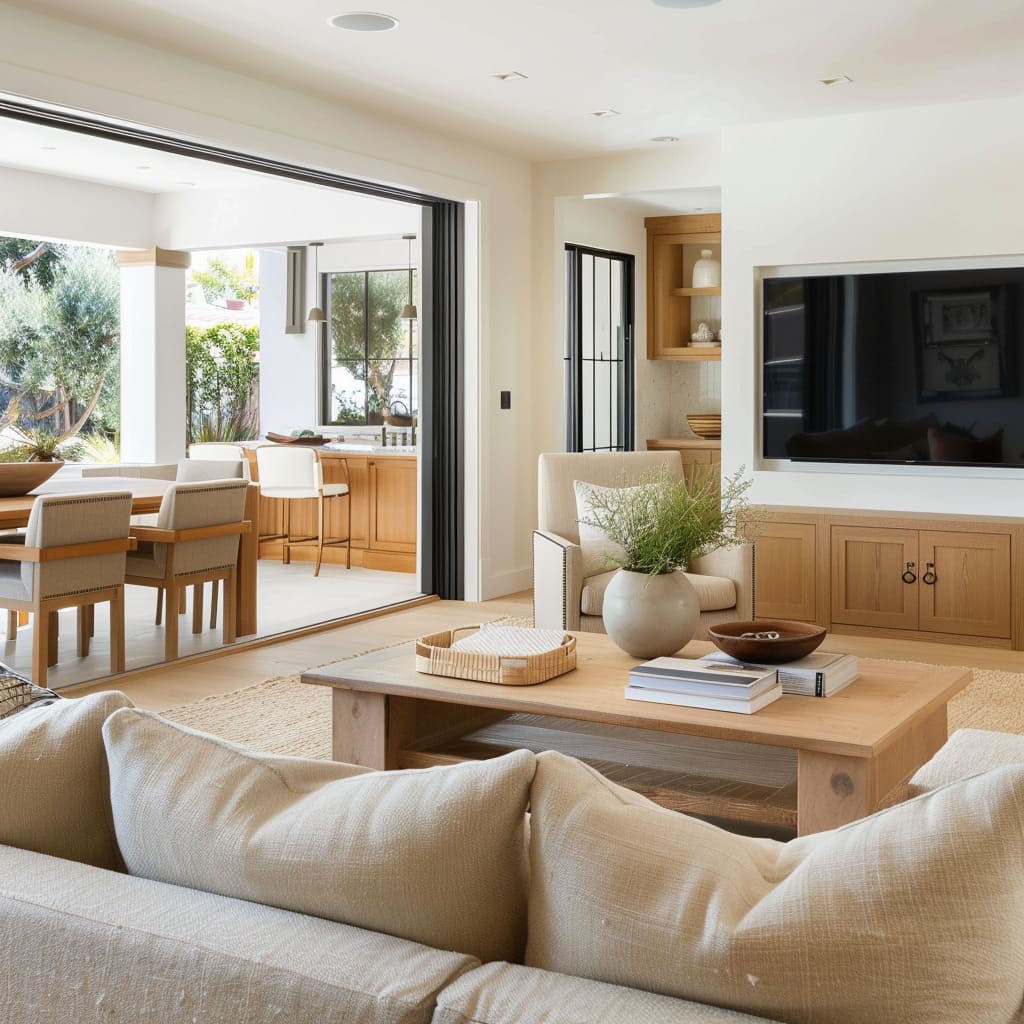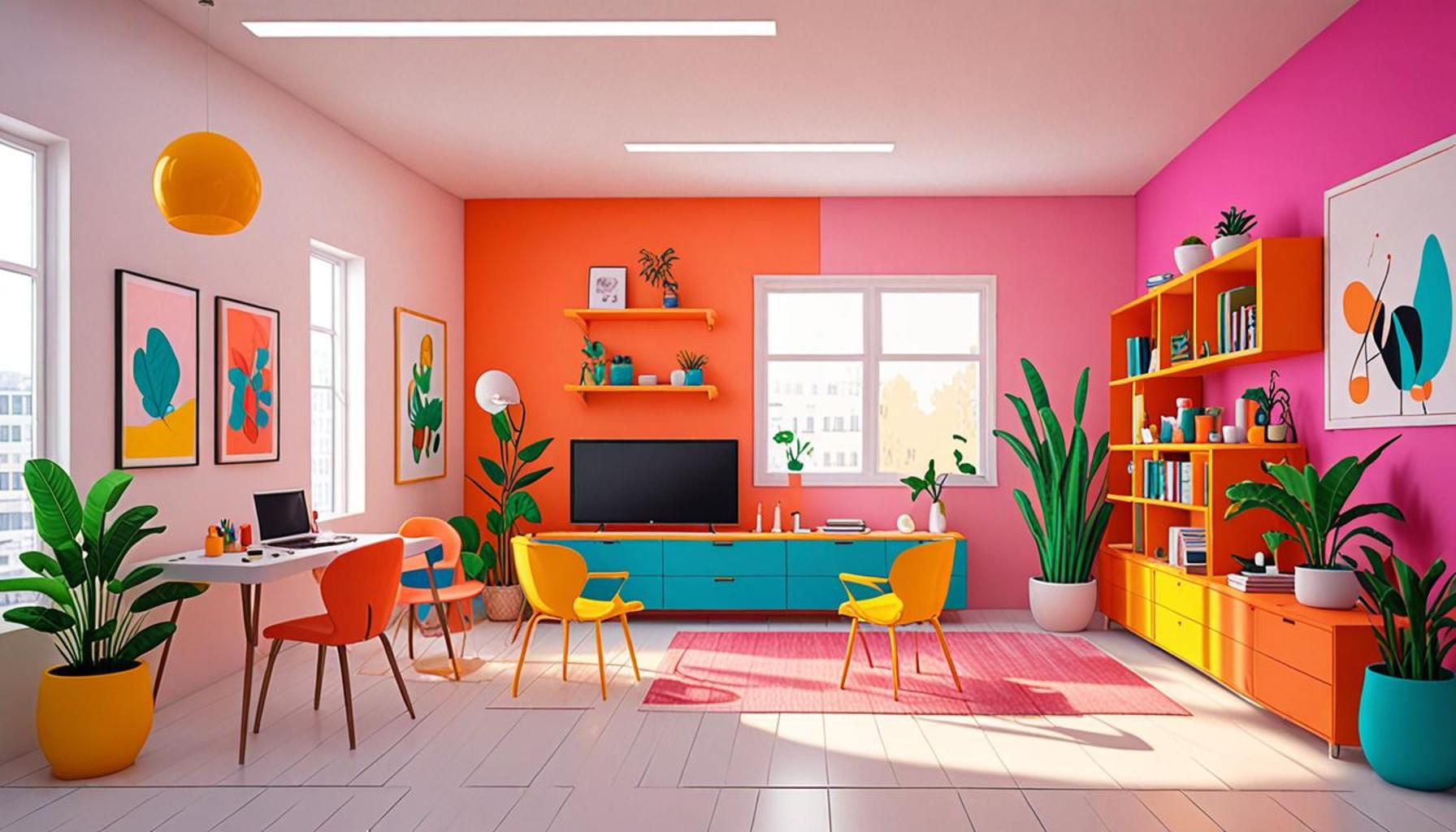Smart Furniture Design: Compact Solutions for Small Spaces

Maximizing Space Through Intelligent Design
In today’s fast-paced world, urban living often comes with space constraints. More people are finding themselves in apartments or homes where maximizing every square foot is essential. This shift toward smaller living spaces has made intelligent design a cornerstone of modern home furnishings, allowing individuals to live comfortably without feeling cramped.
The Rise of Smart Furniture Design
Enter the realm of smart furniture design — the innovative approach to furnishing small spaces without sacrificing comfort or style. This approach caters to the modern lifestyle, where functionality merges seamlessly with aesthetic appeal. Smart furniture not only serves practical needs but also elevates the overall aesthetic of your home.
Multi-functional Pieces
One hallmark of smart furniture design is the creation of multi-functional pieces. These are items that serve several purposes, making them ideal for small living environments. For instance, a sofa that converts into a bed can be a lifesaver for those who frequently host guests. Additionally, coffee tables that can be elevated to dining height offer versatility for those who may not have room for a dedicated dining set. Examples like the LACK coffee table from IKEA exemplify this trend, providing storage beneath its surface while easily transforming for varied uses.
Space-saving Designs
Another essential aspect of smart furniture is space-saving designs. Innovations such as foldable tables and chairs can be tucked away when not in use, freeing up valuable floor space in the process. For instance, the Nimbus folding table can be expanded to accommodate dinner guests but easily collapses and hangs on the wall when the meal is over. These designs allow individuals to maintain a sense of openness in their homes, counteracting the claustrophobia that often accompanies smaller spaces.
Vertical Storage Solutions
In addition to multi-functional and space-saving designs, vertical storage solutions dramatically enhance storage potential. Wall-mounted shelves and cabinets make clever use of height, providing additional space for books, decor, and essentials without encroaching on valuable floor space. For example, a tall bookshelf that reaches the ceiling can house numerous items while providing an eye-catching focal point. Attractive ladder shelves not only serve as a stylish storage option but also draw the eye upward, creating an illusion of a larger space.

The Growing Importance of Smart Furniture
As cities expand and homes shrink, the need for compact and versatile furniture grows stronger. Interestingly, a recent study showed that nearly 50% of Americans live in spaces under 1,000 square feet. This statistic underscores the necessity of smart furniture in enhancing livability and comfort. The increasing trend towards urbanization necessitates a focus on intelligent, adaptable designs that cater specifically to the constraints of city living.
With so many options available in the market today, it’s time for individuals to explore smart furniture design and discover how these compact solutions can redefine their space. By integrating functionality with style, smart furniture paves the way for a more comfortable, organized, and aesthetic living environment, making urban life not only sustainable but also enjoyable.
DIVE DEEPER: Click here to uncover the benefits of minimalism and sustainability
Innovative Features of Smart Furniture
As urban dwellings become increasingly synonymous with limited square footage, the demand for innovative furniture solutions has never been greater. The modern consumer seeks furnishings that are not only aesthetically pleasing but also capable of maximizing functionality in tight quarters. Smart furniture design embodies this spirit of innovation, incorporating features that allow individuals to live their best lives, even within a small footprint.
Transformative Artistry
At the core of smart furniture design is a focus on transformative artistry. Many furniture pieces are engineered to adapt to the user’s needs, often undergoing complete transformations to serve different roles within a space. Consider the traditional dining table, which can now morph into a work desk or a crafting station in mere seconds. Brands like West Elm offer chic tables that maximize utility without compromising on style, ensuring that aesthetics remain intact as functionality takes the forefront.
Integrating Technology
Another significant element of smart furniture is the integration of technology into the design. Today, consumers are increasingly on the lookout for pieces that offer smart features. From charging stations hidden within stylish end tables to lift-top desks that raise your workspace to a standing height, technology plays a pivotal role in redefining comfort and convenience within small spaces. Smart furniture manufacturers are continually finding ways to embed technology seamlessly within their creations, demonstrating that functionality and modern design can coexist harmoniously.
Streamlined Aesthetics
Smart furniture design also prioritizes streamlined aesthetics. Minimalism, characterized by clean lines and uncluttered designs, is increasingly favored in contemporary décor. The beauty of such design choices lies in their ability to make spaces feel larger while simultaneously exuding style. Pieces that embrace a minimalist ethos not only reduce visual clutter but also encourage decluttered living, which further amplifies the perception of space. Additionally, modular furniture systems are gaining traction, allowing homeowners to configure their furnishings to fit their unique preferences and requirements.
Embracing Environmentally-Friendly Materials
Sustainability is yet another vital consideration in smart furniture design. With growing awareness of environmental issues, many manufacturers are turning to eco-friendly materials. Items constructed from reclaimed wood, bamboo, or recycled plastics not only appeal to the environmentally conscious consumer but also add unique character to living spaces. By choosing sustainably sourced materials, homeowners can contribute positively to the planet while enhancing their living environment with stylish yet responsible choices.
Key Advantages of Smart Furniture Design
In summary, the advantages of smart furniture design extend beyond just saving space. Here are some key benefits:
- Multi-functional capabilities for enhanced utility
- Technological integrations for modern convenience
- Aesthetic appeal that maximizes visual space
- Sustainable materials for eco-friendly living
By employing smart furniture solutions, individuals can create a harmonious living environment that accommodates modern needs without compromising comfort or style. An intelligently designed space not only ensures practicality but also uplifts overall well-being, making it an essential consideration for those navigating the realities of compact urban living.
| Functional Space Maximization | Innovative Storage Solutions |
|---|---|
| With smart furniture designs, every inch of a small space is utilized efficiently. | The introduction of multifunctional pieces such as beds with built-in storage or coffee tables that expand makes it easier to maintain an organized and clutter-free environment. |
| Create a seamless flow in tight quarters. | Adaptive designs allow for quick transitions between different uses, such as transforming a workspace into a leisure area, catering to an evolving lifestyle. |
Smart furniture design not only focuses on aesthetics but prioritizes ingenuity, bringing forth solutions tailored for compact living. Achieving harmony in small spaces means incorporating designs that foster harmony while accommodating daily activities without compromise. Expanded thoughts on integrating hidden storage can lead to a dramatic change in how space is perceived and utilized. This dual benefit of functionality and style makes the exploration of smart furniture essential for urban dwellers and anyone looking to maximize their living experience. With the trend of compact solutions rising, staying informed about emerging products in this evolving market is vital for anyone interested in enhancing their living quarters.
DISCOVER MORE: Click here to dive deeper
Practical Applications of Smart Furniture in Everyday Life
The benefits of smart furniture design extend far beyond theoretical advantages, translating into practical applications that can revolutionize how we utilize our living spaces. As urban populations continue to surge, the emphasis on compact solutions has opened the door to innovative furniture pieces that address common challenges faced by city dwellers.
Space-Saving Innovations
Among the standout innovations in smart furniture are foldable and expandable pieces. These ingenious designs allow homeowners to maximize functionality without sacrificing space. For instance, the Murphy bed has made a remarkable comeback, evolving from a mere novelty in design to a staple in modern residences. Contemporary iterations incorporate stylish cabinetry that seamlessly blends into the room’s decor when not in use. This multifunctional approach allows small apartments to transform a living area into a guest room in an instant, merging convenience with style.
Smart Storage Solutions
Another critical aspect of smart furniture design is the emphasis on smart storage solutions. In small spaces, clutter can quickly become overwhelming, but furniture that doubles as storage can alleviate this issue. Ottomans that open up to store blankets, benches with compartments for shoes, or coffee tables with hidden storage are just a few examples of how design can be merged with utility. Brands like IKEA have capitalized on this trend, offering a wide range of products that encourage organized living while keeping everything within easy reach.
Customization and Adaptability
Today’s smart furniture allows for an unprecedented level of customization. Modular furniture pieces, such as sectional sofas that can be rearranged to fit varying layouts, provide homeowners with the freedom to modify their space as needed. This adaptability is not just practical; it also caters to individual styles and preferences, allowing users to personalize their environment. Moreover, platforms like Wayfair offer virtual tools that help customers visualize their selections, ensuring that every piece complements their existing décor.
Health and Well-Being Considerations
Smart furniture design also places a significant focus on health and well-being. With the rise of remote work, ergonomic solutions have become crucial for those spending hours at a desk. Height-adjustable desks that allow users to alternate between sitting and standing are extremely popular, promoting better posture and reducing the risks associated with sedentary lifestyles. Brands like Fully combine sleek design with ergonomic technology, encouraging healthy living without compromising aesthetics.
Enhanced Living Experiences Through Design
Ultimately, smart furniture design is about enhancing the living experience. By implementing these compact solutions, individuals can create functional, stylish environments that reflect their personal tastes while accommodating modern demands. An impressive 70% of urban renters expressed interest in multifunctional furniture that meets their diverse needs, illustrating the hunger for innovation in everyday living. As smart furniture continues to evolve, it promises to forge new paths in effective space utilization, ensuring that even the smallest of homes can feel spacious, organized, and inviting.
DISCOVER MORE: Click here to find out how to streamline your digital footprint
Conclusion: Embracing the Future of Living with Smart Furniture
The landscape of urban living is rapidly changing, and the advent of smart furniture design is at the forefront of this transformation. As we have explored, the integration of multifunctional and adaptable furniture offers innovative solutions that make the most of limited space while enhancing everyday living. From foldable pieces to clever storage options, these designs not only optimize functionality but also reflect a lifestyle that values both aesthetic appeal and practicality.
The ability to personalize and modify our environments through modular systems further underlines the importance of smart furniture in today’s homes. As consumer preferences shift towards products that cater to both style and well-being, manufacturers are responding with ergonomic designs that prioritize health without sacrificing flair. This shift indicates a growing awareness of how our living spaces significantly impact our overall quality of life.
Furthermore, as urban dwellers increasingly demand solutions that suit their evolving needs, the market for compact furniture will only continue to expand. With the majority of renters expressing interest in multifunctional designs, the prospects for smart furniture are promising. This shift not only affirms the relevance of innovation in home design but opens doors for further exploration into customizable and health-conscious products.
In conclusion, embracing smart furniture design is essential in crafting spaces that are both functional and enjoyable. As we witness this evolution, we can be inspired to rethink our living environments, paving the way for a future where even the smallest homes are equipped with the capabilities of sophistication and utility.


